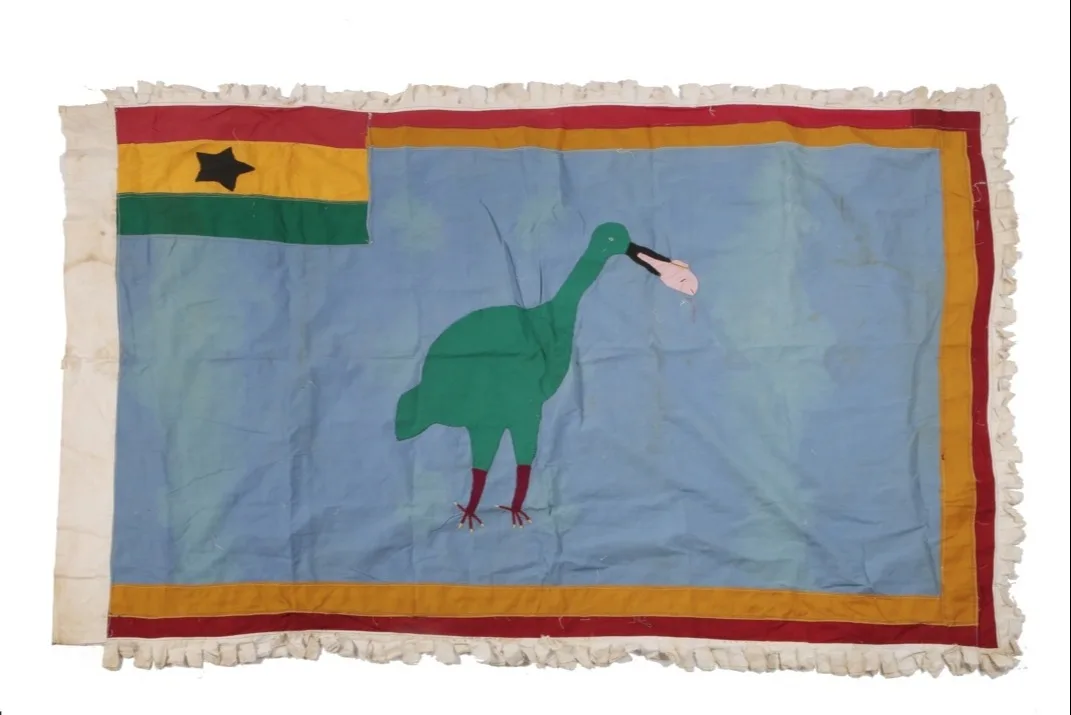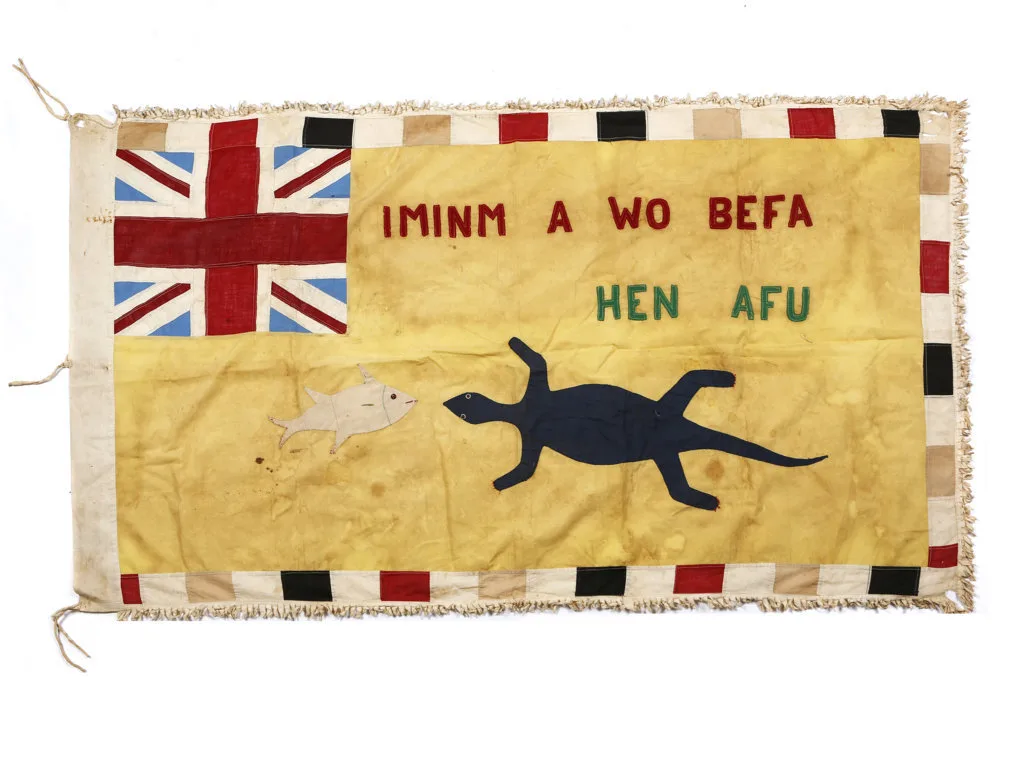

Asafo flags are a colorful part of Ghanaian culture, but they are little known outside the west African country. That’s where Londoner Barbara Eyeson comes in. Aged 19, Barbara was on a family holiday in the country her parents come from when one of the flags caught her eye.
“I was confused initially due to the British flag canton stitched to the corner. It made me investigate further what these flags represented,” Barbara says. She has spent the last ten years collecting these valuable pieces of history as the creative director of Asafo Flags.
Barbara’s family is from the Fante tribe, who live in villages along Ghana’s southern coast. In the 18th Century, the Fante states were made up of small independent groups who banded into rival fighting units – called asafo (‘sa’ meaning war and ‘fo’ meaning people) – to protect themselves.

Taking a cue from European military regalia, the flags — also known as frankaa — were created as a kind of branding for each company to give a sense of identity, pride and community.
These picture-based flags were used to send messages to friends and enemies. Images of crocodiles or lions would advertise a group’s strength, while during the slave trade, the flags were displayed defiance and resistance to slavers.
But they were also used as friendly banter between neighboring groups, to tell jokes or share wisdom through proverbs. “They all tell a story,” Barbara says.

There’s even an asafo flag in one of the business class lounges at Heathrow Airport.
In this way the flags create an alternative history of Ghana. When the Europeans arrived, ships appear on the flags, as do new symbols imported by the immigrants like dragons and griffins. As the railways were laid and airplanes flew overhead, trains and planes made their way onto the flags. Under British colonial rule, the Union Jack would often be stitched into the top right or left hand corner.
On the African continent, national flags are particularly meaningful, signalling the end of colonial rule and the hope-filled beginning of independent African nations. When Ghana gained hard-won independence in 1957, a new national flag was designed by the artist and stateswoman Theodosia Salome Okoh who, like the asafo flag-makers, made aesthetic choices steeped in symbolism.


At the time she said, “I decided on the three colors of red, gold and green because of the geography of Ghana. Ghana lies in the tropics and is blessed with rich vegetation. The color gold was influenced by the mineral rich nature of our lands and red commemorates those who died or worked for the country’s independence. Then the five-pointed lone star is the symbol of African emancipation and unity in the struggle against colonialism.”
Modern asafo flags can be identified by the proud inclusion of the colorful national flag where the Union Jack once was.
Asafo flags are made of appliquéd trade cloth . Zigzags and other patterns create a thick border for the scenes that play out inside them and the edges are fringed. No two flags are the same. They are traditionally made by men and the craft stays within specific families who pass the skill down to sons and nephews who serve as apprentices. Only a supi (chief) can commission a new flag to be made.


The role of the asafo remains relevant today and they act as important social and civic organizations. The flags too are still a significant part of communal life. A new one will be created to mark special occasions or to welcome a new asafo captain.
“Today the flags are notably displayed at funerals, annual festivals and other ceremonial occasions where they are placed on central shrines and paraded and waved through villages and towns in processions,” Barbara explains. “Most dynamically, there is a spectacular display of dancing by specially-trained male flag-bearers known as the frankakitsanyi who wear grass skirts that have bells and cowrie shells attached to the waist.”

It’s a good opportunity to show the world the amazing works of African artists.
Barbara collects both old and new flags. For the older pieces, a bit of wear and tear is cherished as evidence of its journey. “The vintage flags are very precious and hold a lot of value, but the new flags made every year for events will become vintage one day too,” she says.
But she’s not alone in her interest – asafo flags have become much sought-after collector’s items in the west and poor quality fakes flood the tourist market. And so although she started collecting the flags for herself, when a family friend expressed her interest in buying a few, Barbara saw a potential business in her hobby.

“I thought it would be easy to list flags I had available online and it snowballed from there,” she says. At first her buyers were wealthy art collectors, but recently she’s seen a shift with more interest from creative types and less specialist enthusiasts. There’s even an asafo flag in one of the business class lounges at Heathrow Airport.
It’s part of an increasing western interest in African arts and culture which Barbara is well placed to work with. “It’s a good opportunity show the world the amazing works of African artists,” she says. “It also keeps some traditional art practices alive which may have become obsolete.”
Words by Alix-Rose Cowie.

